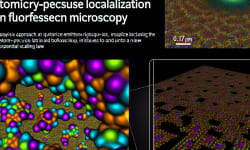Revolutionizing Fluorescence Microscopy: Bayesian DIGIT Method Achieves Sub-Ångström Precision
Researchers have unveiled DIGIT, a groundbreaking Bayesian imaging method that sets a new benchmark in fluorescence microscopy. By leveraging advanced probabilistic modeling, DIGIT accurately maps quantum emitters to their corresponding lattice sites, achieving an unprecedented localization precision of just 0.178 Ångström. This remarkable feat introduces a novel exponential scaling law, enabling massively parallel and sub-ångström localization that was previously unattainable.
The DIGIT approach is poised to transform both quantum and biological imaging, offering scientists the ability to observe molecular and atomic structures with extraordinary clarity. This method not only enhances spatial resolution but also significantly increases throughput, making it ideal for large-scale studies in material science and life sciences. The exponential scaling law discovered through DIGIT paves the way for future innovations in high-precision microscopy, potentially unlocking new insights into the fundamental processes of life and matter.
References:
Reinhardt, S. C. et al. Ångström-resolution fluorescence microscopy. Nature 617, 711 (2023).
Radmacher, N. et al. [Further references truncated for brevity]
Read the source »






